Associated with stag dos and incorrectly still believed by some to be poisonous, absinthe gets a bad rep. But this small distillery near Aboyne is fighting to bring about the drink’s revival.
Lost Loch Spirits, based in Deeside Activity Park, produce gin, vodka, rum and haroosh whisky liqueur. But the first product they distilled back in 2017 was absinthe.
The motivation behind the Murmichan launch in November of that year was that “no one else had done it” in Scotland yet.
That’s according to Jan Leatham, the team’s tourism and hospitality manager.
She says: “We’re convinced that this is going to be absinthe’s year.
“It’s really unique. People are always looking for something different.
“People have an opinion on it, and then it turns out they don’t really know anything about it.
“Some people think it’s poisonous, some have only had really bad stag experiences with it.
“And I think it is something that is actually really sophisticated, and it has a really interesting history.
“We want to create an atmosphere around absinthe which I think it deserves.
“It’s not a novelty drink, or something just for your Prague stag.”
Aboyne absinthe distiller: ‘no, it’s not poisonous’
The Murmichan name comes from an old Scots term for a wicked fairy.
An apt choice for the absinthe, nicknamed the “green fairy”.
The 64% product comes with a certain notoriety, says Jan.
“People are quite scared of it,” she says.
“Lots of people have experience where they’ve drank something either neon green or black. Maybe they’ve set fire to it on a stag night in Prague.
“But ours is 64%, so it’s weaker than your average absinthe.”
Jan recalls: “Somebody asked me ‘is it still poisonous?'”
So where does absinthe’s mysticism – and fear of poisoning – come from?
“You have to use juniper in order to create gin, and to make absinthe you need to use wormwood,” Jan explains.
“Wormwood is just a plant. It does have a toxic compound (thujone), but it would only be toxic if you were able to eat or drink it in large quantities.
“And you could say that about a lot of things if you had them in large quantities.”
Absinthe was also banned in France for almost 100 years, though it was never officially banned in the UK.
“People blamed the wormwood – not the 80-90% alcohol they were drinking – for hallucination and death,” says Jan.
How do Lost Loch Spirits make their absinthe near Aboyne?
To make 50 litres of the Scottish absinthe, the team combine 23 litres of water, 13 of ethanol, the equivalent of a jar of honey and a range of botanicals.
The botanicals (which means plants or parts of plants) include hyssop, star anise, fennel, aniseed, mint, blackberry leaves, heather flower and lemon thyme.
“This is a traditional Swiss-French recipe, but we’ve added a Scottish twist by including bramble leaves, heather flower and local honey,” says Jan.
The main flavours that come through when you taste the absinthe are aniseed and fennel.
It takes five hours to make 50 litres – or 36 bottles worth – of the absinthe.
“When you’re distilling it,” Jan says, “it comes off around 75%, so we have to dilute it down to 64%.”
The water which Lost Loch Spirits use in all their drinks is Deeside Water from the Pannanich Wells near Ballater.
“I think people are realising not everything has to be full of sugar, and there are other ways to flavour thing,” Jan adds.
She hopes the Murmichan absinthe will be available on supermarket shelves in the future.
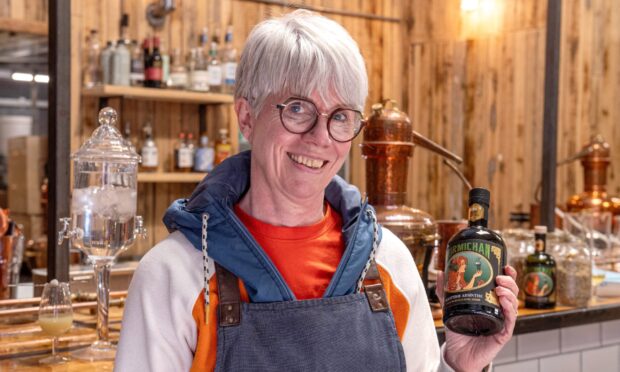
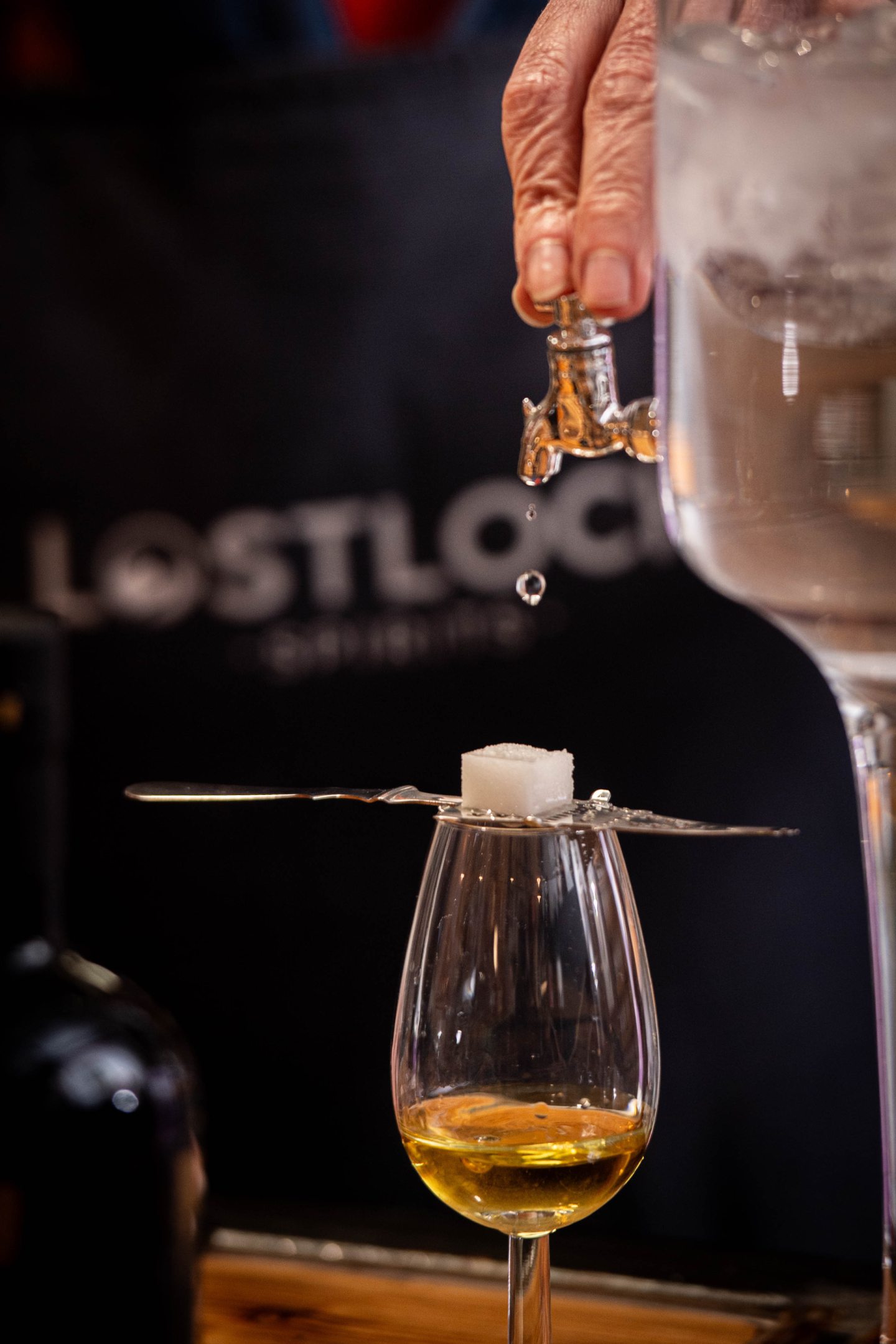

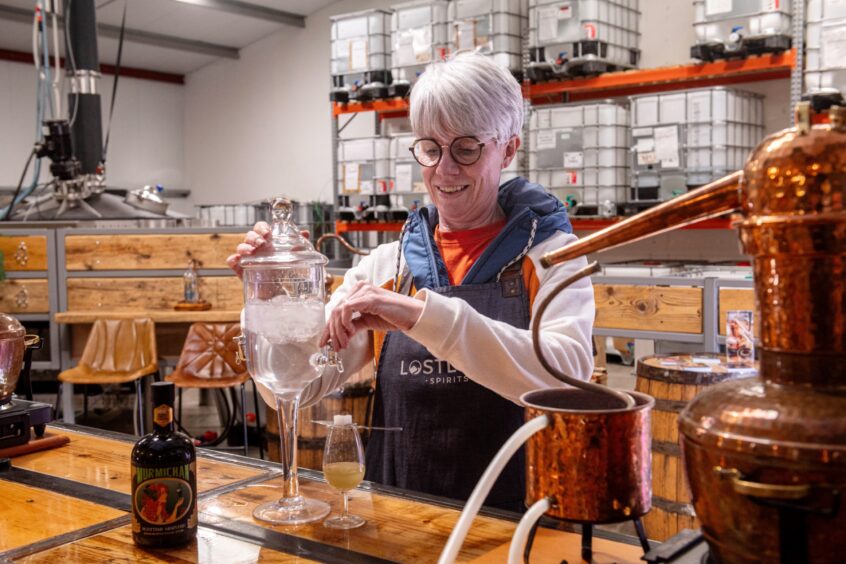
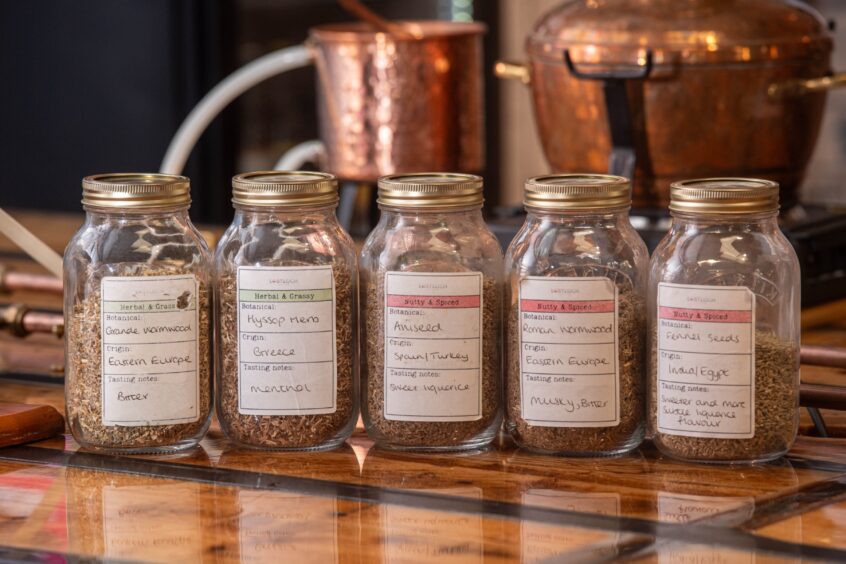

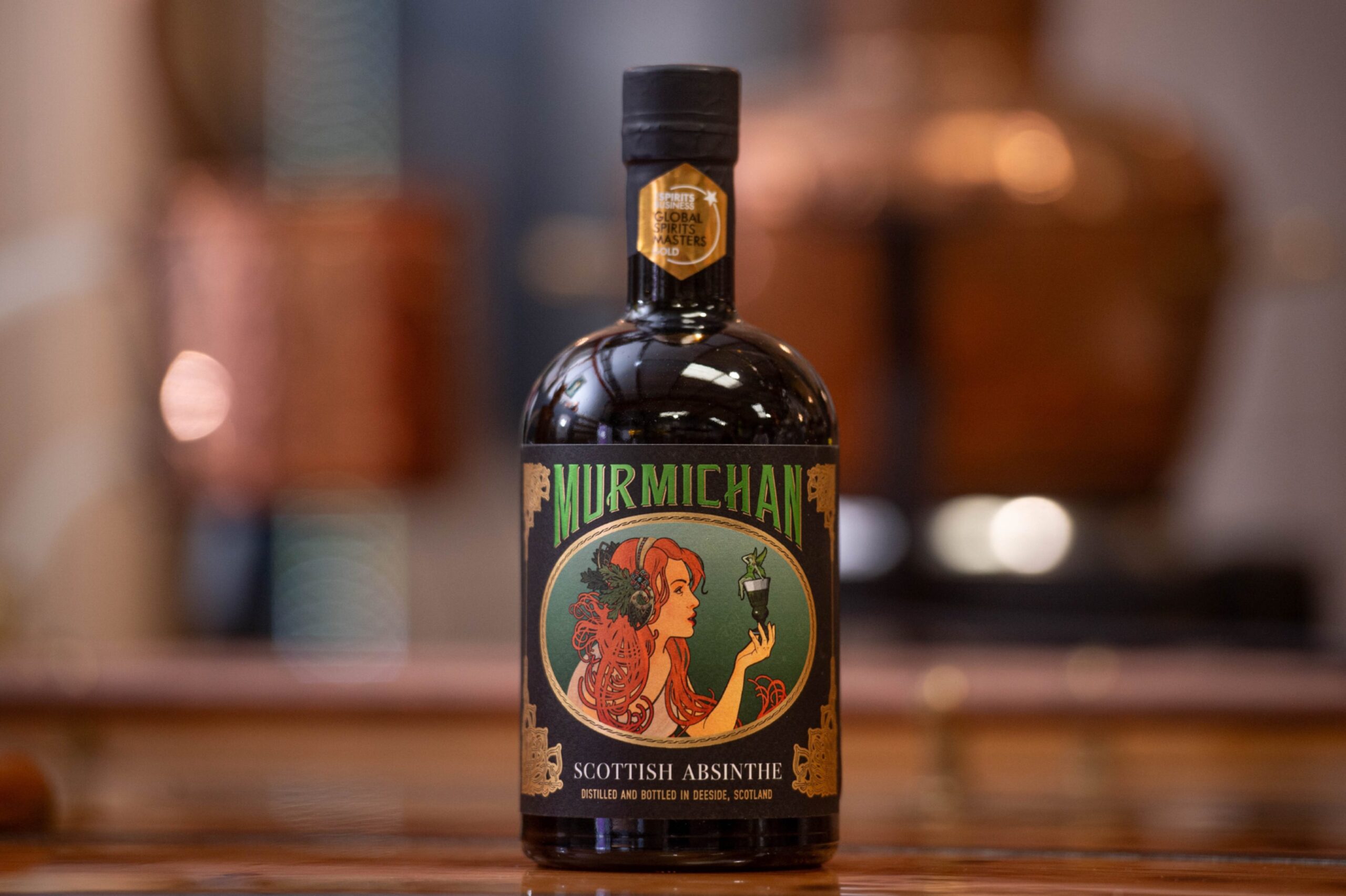
Conversation